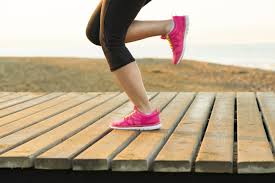“What are your legs?”
“Steel Springs!”
“What are they gunna do?”
“Hurl me down the track.”
“How fast can you run?”
“As fast as a leopard”
That scene right there is one of the only things I actually remember from my year eight English classes. Stated just before Archy jumps out of the trenches and makes a mad dash toward the enemy in the amazing 1981 story of Gallipoli.
Leg stiffness in running was not a concept I had heard of until the start of 2016 when I attended a running symposium by Dr Christopher Bishop from The Biomechanic Lab in Adelaide. Yet another variable in the paradigm of running was opened to my mind and yet another question about how the activities we participate in can lead to injury.
Leg stiffness relates to the soft tissues of the lower limb; muscles, tendons and ligaments working together to store elastic energy through a stretch and recoil process and lower the metabolic cost of movement. Leg stiffness has been shown to be vary based on stride frequency, velocity, ground force reaction and surface firmness suggesting that inherent properties of the musculoskeletal system associated with the central nervous system determine leg stiffness and not conscious intervention (Arampatzis, Bruggemann, & Metzler, 1999).
Running economy has been described as the amount of energy required to maintain a submaximal running velocity. Improved running economy has been linked to the neuromuscular benefits associated with resistance training which is believed to enhance lower limb stiffness during running and therefore the stretch-shortening reflex (Roschel, et al., 2015).
Additionally, leg spring stiffness has been found to adjust to a change stride frequency. Further information regarding stride rate and length can be explored here: https://footnotesblogging.com/2017/01/23/running-cadence-is-180bpm-right-for-you/
In contrast to this discussion, Farley et al; suggests that leg stiffness does not change with a change in stride length but stays consistent while the angle of leg sweep and time spent in ground contact changes. Further to this suggestion, in a separate paper they concede that although they’re findings suggest no change in leg stiffness with a change is stride rate, there is a change of leg stiffness with a change in surface type.
Surfaces with a lesser density require a runner to reduce their leg spring compression by increasing their leg stiffness. The adjustment of leg stiffness counterbalances the surface compression and maintains the athletes centre of mass despite the change in how firm a surface may be.
Leg Stiffness is important when changing various surfaces in a single run for the prevention of injury but also for enabling our legs to work like steel springs and maintain our running efficiency. The system itself is in-built but can be trained and therefore improved, the question posed is whether an individual would directly benefit from this neural training process or if there was a better use of time when looking at deficits of an athlete or their training program?
This was a tough topic to get my head around, trying not only fully understand the concept but then place that knowledge in a simpler term was a difficult task. If you wish to try to understand this topic more in-depth I suggest you follow references below and really take the time to understand what the research states.
Until Next Time
Jackson McCosker
Podiatrist
References
Arampatzis, A., Bruggemann, G., & Metzler, V. (1999). The Effect of Speed on Leg Stiffness and Joint Kinetics in Human Running. Journal of Biomechanics, 1349 – 1353.
Farley, C., & Gonzalez, O. (1995). Leg Stiffness and Stride Frequency in Human Running. Pergamon, 181 – 186.
Ferris, D., Liang, K., & Farley, C. (1999). Runners Adjust Leg Stiffness for Their First Step on a New Running Surface. Journal Of Biomechanics, 787 – 794.
Ferris, D., Louie, M., & Farley, C. (1998). Running in the Real World: Adjusting Leg Stiffness For Different Surfaces. The Royal Society, 989 – 994.
Gunther, M., & Blickhan, R. (2002). Joint Stiffness of the Ankle and the Knee in Running. Journal of Biomechanics, 1459 – 1474.
Roschel, H., Barroso, R., Tricoli, V., Batista, M., Acqueta, F., Serrao, J., & Ugrinowitsch, C. (2015). Effects of Strength Training Associated With Whole-Body Vibration Training on Running Economy and Vertical Stiffness. Journal of Strength and Conditioning Research, 2215 – 2220.
Williams, D., Davis, I., Scholz, J., Hamill, J., & Buchanan, T. (2003). High-Arched Runners Exhibit Increased Leg Stiffness Compared to Low-Arched Runners. Gait & Posture, 263 – 269.
